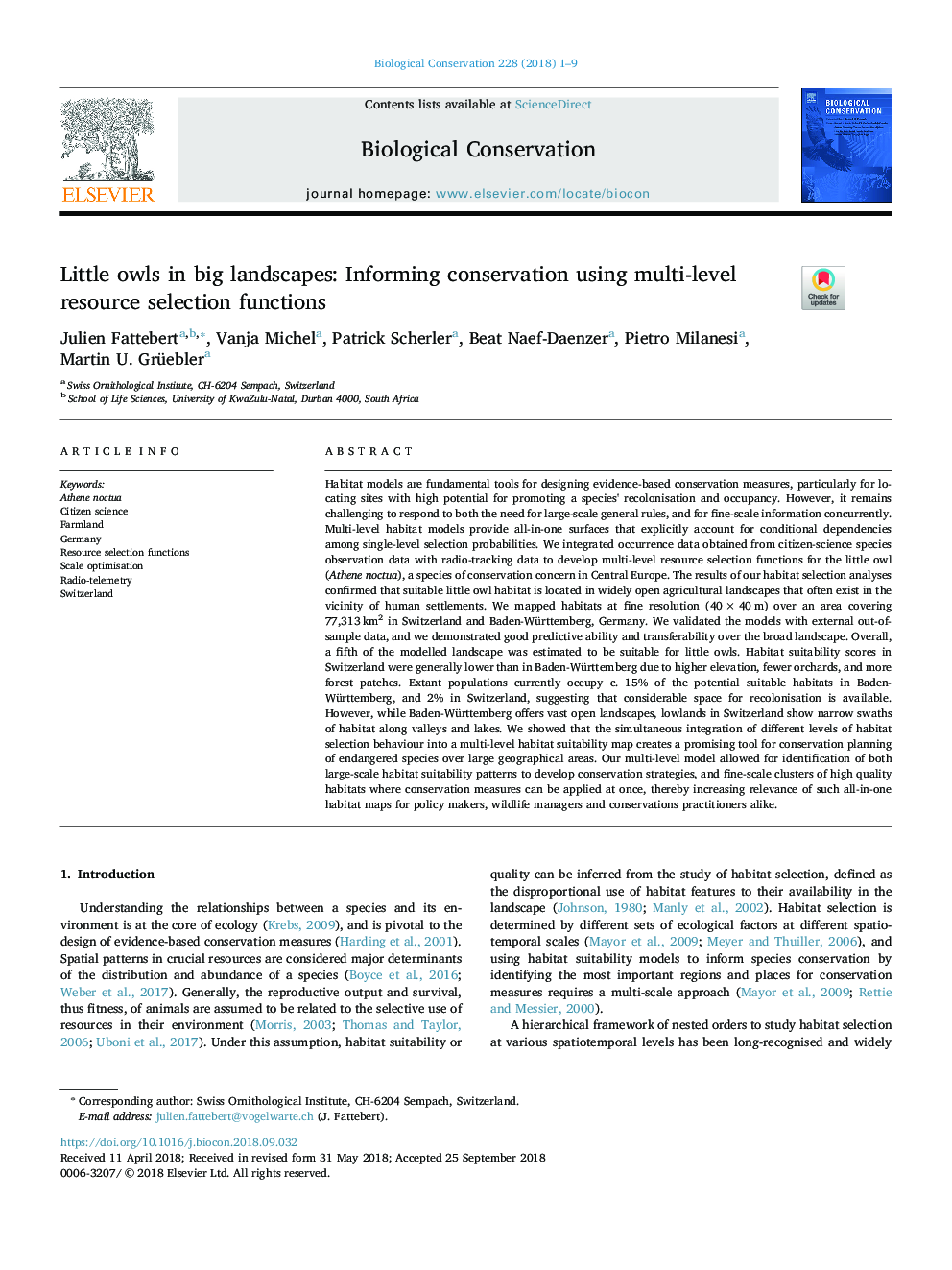| کد مقاله | کد نشریه | سال انتشار | مقاله انگلیسی | نسخه تمام متن |
|---|---|---|---|---|
| 11008229 | 1840465 | 2018 | 9 صفحه PDF | دانلود رایگان |
عنوان انگلیسی مقاله ISI
Little owls in big landscapes: Informing conservation using multi-level resource selection functions
ترجمه فارسی عنوان
جغدها کوچک در مناظر بزرگ: محافظت از اطلاعات با استفاده از توابع انتخاب چند سطحی
دانلود مقاله + سفارش ترجمه
دانلود مقاله ISI انگلیسی
رایگان برای ایرانیان
کلمات کلیدی
آتین نوکتا، علم شهروند زمین کشاورزی، آلمان، توابع انتخاب منابع، بهینه سازی مقیاس رادیو تله متری، سوئیس،
موضوعات مرتبط
علوم زیستی و بیوفناوری
علوم کشاورزی و بیولوژیک
بوم شناسی، تکامل، رفتار و سامانه شناسی
چکیده انگلیسی
Habitat models are fundamental tools for designing evidence-based conservation measures, particularly for locating sites with high potential for promoting a species' recolonisation and occupancy. However, it remains challenging to respond to both the need for large-scale general rules, and for fine-scale information concurrently. Multi-level habitat models provide all-in-one surfaces that explicitly account for conditional dependencies among single-level selection probabilities. We integrated occurrence data obtained from citizen-science species observation data with radio-tracking data to develop multi-level resource selection functions for the little owl (Athene noctua), a species of conservation concern in Central Europe. The results of our habitat selection analyses confirmed that suitable little owl habitat is located in widely open agricultural landscapes that often exist in the vicinity of human settlements. We mapped habitats at fine resolution (40â¯Ãâ¯40â¯m) over an area covering 77,313â¯km2 in Switzerland and Baden-Württemberg, Germany. We validated the models with external out-of-sample data, and we demonstrated good predictive ability and transferability over the broad landscape. Overall, a fifth of the modelled landscape was estimated to be suitable for little owls. Habitat suitability scores in Switzerland were generally lower than in Baden-Württemberg due to higher elevation, fewer orchards, and more forest patches. Extant populations currently occupy c. 15% of the potential suitable habitats in Baden-Württemberg, and 2% in Switzerland, suggesting that considerable space for recolonisation is available. However, while Baden-Württemberg offers vast open landscapes, lowlands in Switzerland show narrow swaths of habitat along valleys and lakes. We showed that the simultaneous integration of different levels of habitat selection behaviour into a multi-level habitat suitability map creates a promising tool for conservation planning of endangered species over large geographical areas. Our multi-level model allowed for identification of both large-scale habitat suitability patterns to develop conservation strategies, and fine-scale clusters of high quality habitats where conservation measures can be applied at once, thereby increasing relevance of such all-in-one habitat maps for policy makers, wildlife managers and conservations practitioners alike.
ناشر
Database: Elsevier - ScienceDirect (ساینس دایرکت)
Journal: Biological Conservation - Volume 228, December 2018, Pages 1-9
Journal: Biological Conservation - Volume 228, December 2018, Pages 1-9
نویسندگان
Julien Fattebert, Vanja Michel, Patrick Scherler, Beat Naef-Daenzer, Pietro Milanesi, Martin U. Grüebler,
